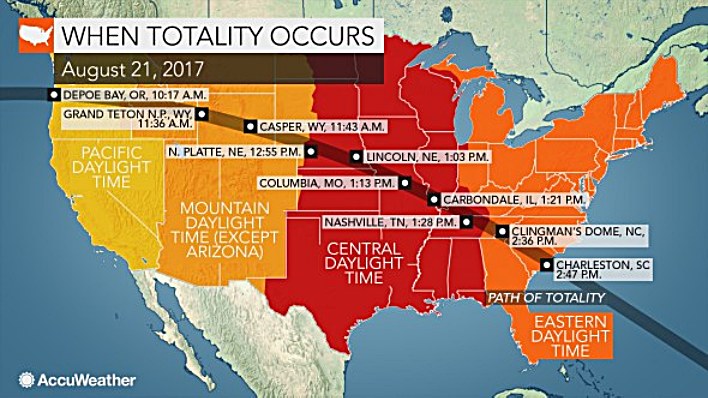Mirror from the states
The eclipse is CERTAIN TO BE A DOOM EVENT, Here's the inside scoop
519 people will get a headache from eating Doritos that contain sucralose, purchased by accident.
1,193 photographers will drive long distances to nail "the eclipse event of a lifetime" only to discover they forgot to bring memory, or forgot the camera entirely. Of those who forgot to bring memory but at least have a camera, 17 percent will have cameras with 50 megs or less of base memory built in, which will "save the day" but be much like eating salt.
5,400 will have some sort of difficulty ditching the car when they get to the area of totality, and will remorsefully plod down the road during the peak of the eclipse, with a cop following to ticket them the minute they stop the car to "capture the moment".
54 people will get a DUI on the way home. That's probably less than the super bowl, but the eclipse will draw a different crowd.
23 people will destroy the CCD's in their cameras by mounting them to large reflector telescopes, and then having an "oops" moment with the sun.
BOTTOM LINE? Enjoy the eclipse, don't forget your camera, memory, or quality junk food, park in people's yards carefully, ARRIVE A LITTLE EARLY and don't drink. If you are lucky enough to have a nice telescope, you are probably smart enough with it to not fry your CCD. Be careful anyway!
Accuweather ended up having the most useful nationwide eclipse map:

Any earthquakes are not likely to happen under the actual eclipse, they will be more likely to trigger on the other side of the earth. Additionally, if there is bad weather on the other side of the earth, the chance of tornados is higher during a nice eclipse like this one. Most likely there will be no tornados, and no earthquakes, and if there are, eclipse goers won't have to worry about them.
Accurate, easy photography advice during totality:
You will have all the time in the world to play around with your welding glass before and after totality, and practically no time during totality to get a good shot. Here's how to avoid totally wrecked shots.IMPORTANT: This eclipse has a very short totality window. If you are perfectly centered on the eclipse, the best picture will happen 55 seconds in at most locations. You should be able to get a clean shot of what looks like a black disc surrounded by a bright aura. The stars will be visible. THE STREET LIGHTS WILL COME ON. PLAN FOR STREET LIGHTS WHEN SETTING UP YOUR SHOT.
If I had a digital SLR with a bulb function, I'd try ISO 100 with a half second shutter. Handheld you will need a higher ISO, and you really need a lens with a focal length of at least 300 for this. The best common shot will likely be bagged by a tripod mounted super zoom set to max zoom and an ISO of 100, F8, half second shutter released by a 2 second self timer. If your camera can do multiple exposure levels in sequential shots, I'd try at F8: 1/4, 1/2, 1 and 2 second shots captured automatically in sequence at ISO 100, right at peak of totality. (as it turns out, this was bang on when I checked eclipse photography posts) One of those will likely be great. If you are pro, do a second set of shots to overlay the blowouts with shutter speeds 100X higher. For a single shots by normal people, use the first (longer) settings I mentioned.
Most people will get blurry, distant, over exposed, under exposed shots so don't be disappointed if that is what you end up with. There won't be enough time to learn what is right, totality is only 2 minutes in most places this time around, with the longest duration in the country being at Carbondale Illinois, at 2 minutes 46 seconds. Best shot at that location would be at 1 minute 23 seconds in.
If your camera has a hand controlled bulb function, set that up, and watch the screen for the results. USE ISO 100. If the shot is too dark, hold the bulb longer. If too bright, hold the bulb less. Only the best cameras can do this. The best non layered professional shot will likely be had by whoever uses the bulb feature of an expensive digital SLR on a stable tripod and a really long lens.
There are no autofocus cameras that will work for this, you have to use manual or fixed focus.
Some cheaper cameras do not have manual focus, but will allow you to set the focus to infinite. Use that if your camera has it, it will be as good as manual focus.If you have to hand hold your shot, use ISO 1600, the lowest (widest) aperture possible, and a 1/60th shutter (and a second shot with a 1/120 shutter). And hope for the best.

